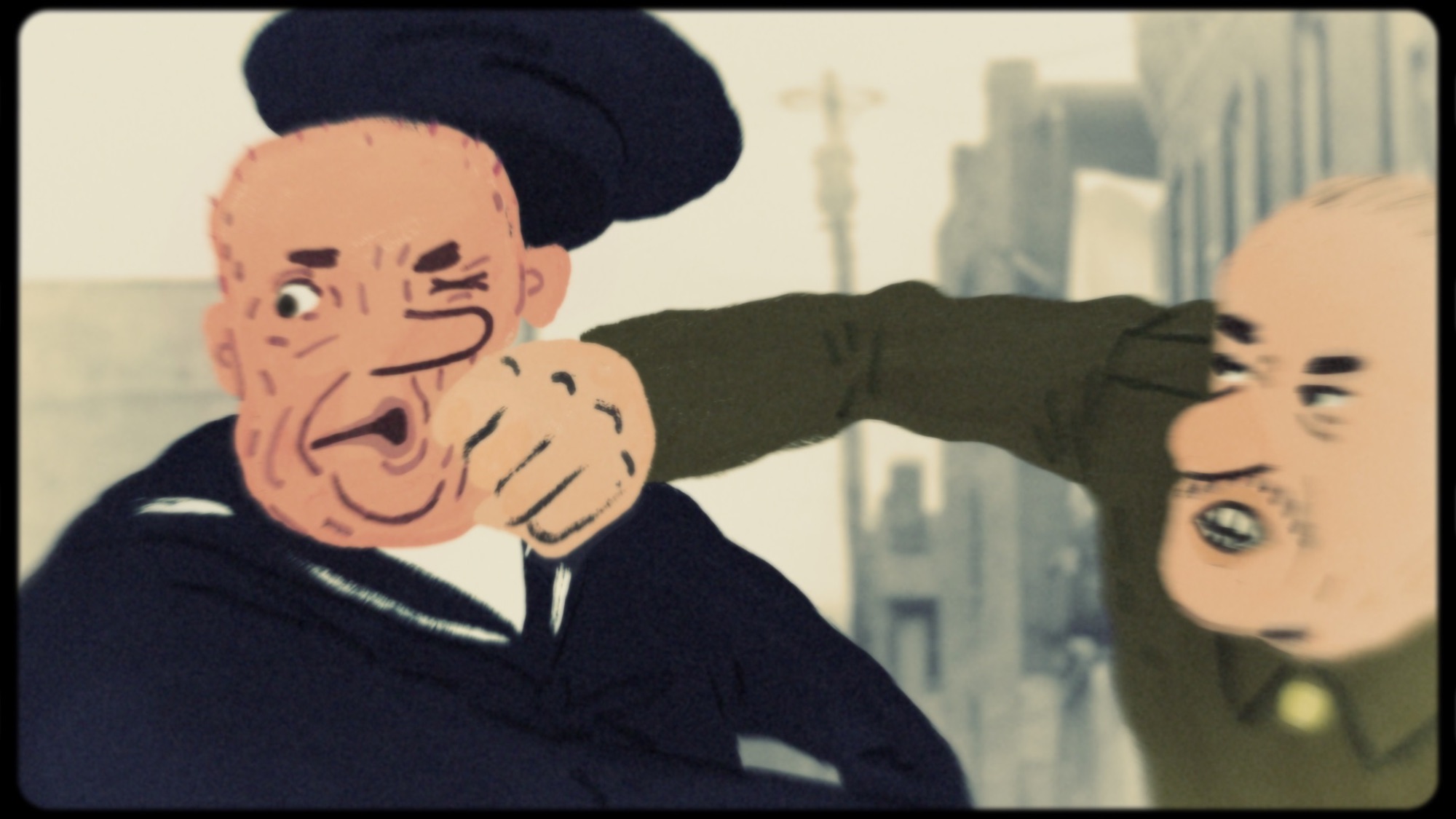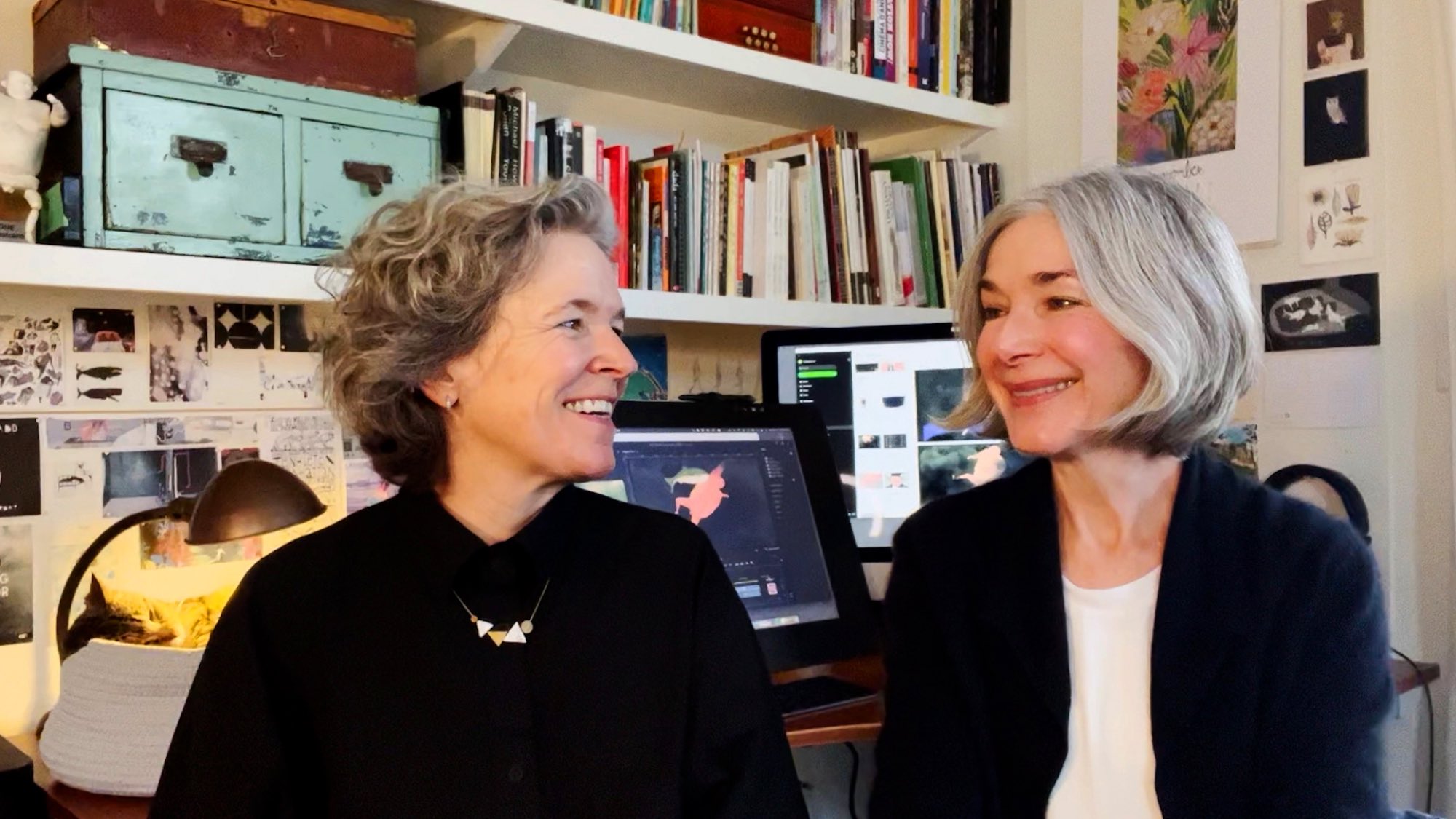
Inspired by the real-life catastrophic Halifax explosion of 1917, Amanda Forbis and Wendy Tilby’s Oscar nominated animation short The Flying Sailor tells the story of a seaman whose life flashes before his eyes when he finds himself catapulted into the air in the wake of the blast. It’s a poignant film that takes a darkly comical stance on the existential circumstance the sailor finds himself in. Through a blend of 2D, 3D and live action techniques, Forbis and Tilby impressively bring their tale to life with plenty of whimsy but also a rich melancholic contemplation. With that in mind, it’s no surprise that The Flying Sailor just won The Short Film Jury Award: Animation at the 2023 Sundance Film Festival and marks the pair’s third Oscar nomination to date. DN spoke with the co-directors, in the run up to the prestigious awards ceremony, about their career-long partnership, the incorporation and blending of multiple animation techniques and the philosophical themes that underpin their work.
How did you first hear about the story of the Halifax explosion and what intrigued you about the possibility for adapting it as an animation?
About 20 years ago we visited the Maritime Museum in Halifax, Nova Scotia. In a section dedicated to the catastrophic Halifax Explosion of 1917, there was a short blurb about a British sailor who was launched by the blast and flew an astonishing two kilometres before landing stark naked, but for one boot, and pretty much unharmed. We were captivated! Our idea was to expand those few chaotic seconds into as many minutes, and imagine the story of the sailor’s flight as a visceral and transcendent near-death experience.
It soon became clear that if we were to capture the depth and ferocity of the exploding city, 3D was the way to go.
What led you to the creative decision of incorporating 2D and 3D animation, in addition to live action footage?
Whenever we start a new project, we say to ourselves, “This one will be fast and loose!” and then it invariably gets more complicated. For The Flying Sailor, we created our animatic using all manner of drawings, photos and archival footage. We loved the gritty, grainy realism of the photographic images, and it soon became clear that if we were to capture the depth and ferocity of the exploding city, 3D was the way to go. With the help of Maya Animator Billy Dyer, we created a virtual ‘model railway’ version of 1917 Halifax; then he had the daunting task of blowing it all up.
Aesthetically, we were aiming for a hand-tinted nautical postcard look. As we’d become quite attached to some of the photos and archival footage we had pulled into the animatic, we decided to keep them, as they seemed to play well with the CG. It was important that the sailor be distinct from all that smoky mayhem, so we rendered him in our usual 2D painterly style.

Was it a challenge to meld those techniques? It appears so fluid and natural in the film.
Thank you! We’re very relieved to hear that. We used plenty of smoke, debris and After Effects shenanigans to knit everything together. The whole process was highly experimental and infinitely more complicated than we had first imagined.
Post-explosion the film shifts from what was an almost cartoon-esque opening into something more sombre and reflective, what prompted you to take that approach?
With stacks of TNT in the real story, how could we resist the cartoon-style prologue? But, more importantly, we wanted to underscore the notion that we all get up in the morning blithely unaware that, in an instant, our plans could be blown sky-high and our lives stripped down to the bare, often desperate, essentials. It could be an accident, a lost job, a bit of bad news, these are the moments that sharply divide our lives between before and after. We’re attracted to contrasts: funny and sad, terrible and beautiful, tiny and vast. These contradictions keep showing up in our work and we feel they tell a truth about life, that it’s a mess of conflicting states and emotions, difficult to navigate and harder still to understand.


How do you both work together as co-directors? Do you have shorthand with one another that allows for you to tackle different parts of production?
Having worked together for 28 years, we have indeed developed a shorthand! Early on, we both had a hand in all tasks but, in recent years, we have moved more into our own lanes. Amanda does the lion’s share of the drawing, animating and rendering while Wendy tackles most of the editing, compositing and preliminary sound work. Even so, we talk through every detail. For us, two heads are better than one; rather than a dilution of the creative process, we find that collaboration yields better ideas and is much more fun. Animation can be such a tedious, solitary, inward-looking pursuit, it’s wonderful to have someone along for commiseration, encouragement and celebration.
We’re attracted to contrasts: funny and sad, terrible and beautiful, tiny and vast.
What creative conversations did you have with Luigi Allemano when it came to creating the score?
Luigi was a terrific creative partner. The varied pace and shifting tones of the film were very tricky, particularly the bit as the sailor is first launched into flight. Luigi was very game to experiment and revise, and he allowed us to have our way with his tracks, speeding, slowing, repeating and even editing certain sections. We are especially thrilled with his composition for the sailor’s plummet back to earth. We asked him to go ‘full Russian’ on it, our temp tracks included Prokofiev and Stravinsky, and the final music packs a powerful punch. Mixing those tracks in the NFB studio was one of the biggest thrills of the production.

Animation can be such a tedious, solitary, inward-looking pursuit, it’s wonderful to have someone along for commiseration, encouragement and celebration.
What’s next for the both of you?
We’re very busy ushering the sailor around, but we do have a few ideas bubbling on the back burner. Though it’s a little early to say what’s next, we do know for sure that it will be fast and loose…!


